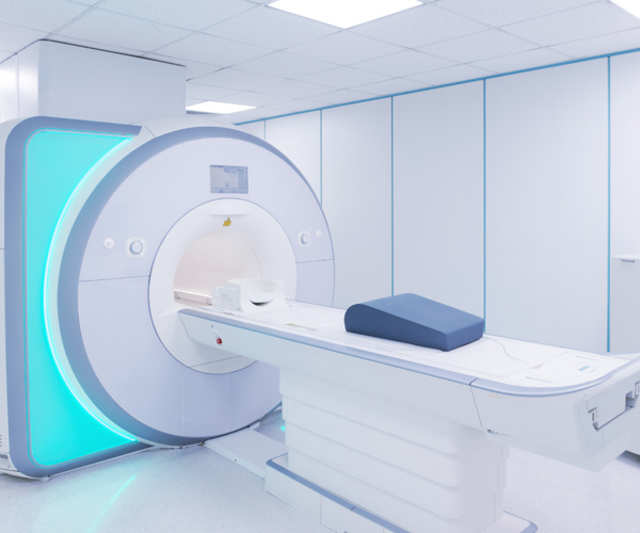Diagnosing endometriosis
Did you know that, in average, it takes anywhere between 6 and 10 years to get an endometriosis diagnosis? I had to wait 10 years for mine, and I know I'm not the only one. I have talked to so many women who had to talk to at least 10 different doctors and spend countless nights at the ER before finally getting the diagnosis. Women whose pain has disrupted their entire lives, affected their partners and children, who have been told that they're exaggerating, that it's all in their head, or that it's probably just anxiety. Considering that endometriosis affects 1 in 10 fertile women, this is completely unacceptable.
So, how do you get the diagnosis? The first step is your anamnesis, or medical history. Your doctor will start by asking you a bunch of questions and try to get a better understanding of your problems. The next step is a general gynecological examination, or a pelvic exam. If your doctor suspects that you may have endometriosis, they will likely continue by looking for physical clues, generally with the help of an ultrasound, an MRI-scan, and/or a laparoscopy. They all have their pros and cons, and your doctor will choose the method(s) based on - among other things - your anamnesis and the pelvic exam.
Anamnesis
The first part - the anamnesis - is pretty straightforward. Your doctor will ask questions in order to get a clearer and deeper understanding of your situation. However, I know from personal experience that it's easy to forget important information right then and there (and then remember it as soon as you walk out the door!), so I suggest you prepare a little beforehand.
Step 1 is to track your pain (and other symptoms) for a while and see if you notice any patterns. Write down anything that may be of importance, e.g. which days you work, if you exercise, what you have had to eat, how you've sleep or where you are in your menstrual cycle. It's not uncommon that you actually do see a pattern once you have it all written down in front of you. And if you don't find one - that's okay. Bring it to your doctor's appointment so that you remember how many days you've been in pain, missed work, etc.
Step 2 is to write down information that you think may be of importance and that you want your doctor to know about (to make sure you don't forget!). Here is a list of questions that your doctor may ask you about:
- When did you first get your period? Do you have a regular menstrual cycle? How much do you bleed?
- How often are you in pain? How does it feel? Where is the pain located? Is there anything that you think may cause it/make it worse (e.g. menstruation, ovulation, sex, eating, urinating, bowel movements)? Is there anything that helps? What painkillers do you usually take? Do they help alleviate the pain?
- Do you have any other symptoms?
- How does all of this affect your daily life? Does it affect your job? Your family? Your romantic/sexual relationships? Your social life?
- Do any of your relatives have endometriosis?
Pelvic exam
During a pelvic exam, your doctor will feel for abnormalities such as cysts or scar tissue. They will also move and palpate (apply pressure) different areas to get a better sense of where the pain is located.
Ultrasounds

Ultrasounds can be performed through the abdomen or through the vagina (transvaginal ultrasound). Regular ultrasounds can help detect signs of larger endometrial implants and cysts. Transvaginal ultrasounds can help find ovarian cysts, endometriomas, endometriosis lesions, deep infiltrating endometriosis, nodules ("lumps" formed by endometriosis tissue and scar tissue), fibroids, and adenomyosis (endometriosis in the muscular wall of the uterus). They can also be used to examine other organs as well, such as the bladder and the bowel. Sometimes, transvaginal ultrasounds can help detect adhesions by assessing the mobility of the abdominal organs. Adhesions often make the organs "stick together" which reduces their ability to move. Smaller endometriosis implants and adhesions don't show up on the images, however, so ultrasounds cannot be used to rule out endometriosis.
MRI-scan

MRI's create detailed images of the organs and tissues in your body. They can detect deep infiltrating endometriosis and endometriomas, and can show detailed information about the location, depth, and size of the endometriosis. The images can then be used to decide whether surgical intervention is indicated, and if so, they can help the surgeons plan the procedure. It can be difficult to detect adhesions on MRI-scans, but if the anatomy on the pictures doesn't look the way it should, this can imply the existence of adhesions. MRI can even be better than laparoscopies when you want to look for endometriosis lesions in someone who has a lot of adhesions that make it difficult to "move around" in the abdomen during surgery because of organs that are stuck together. Just like ultrasounds, MRI-scans can't be used to rule out endometriosis since they usually can't detect small (less than 5 mm) and flat superficial endometriosis lesions.
Laparoscopy

Laparoscopy is a surgical procedure that is performed under anesthesia. The surgeon makes 2-3 small incisions in the abdomen and inserts a tiny video camera that shows images of the abdominal and pelvic organs. A laparoscopy provides detailed information about the location, size, depth, and extent of the endometrial implants. During the surgery, a tissue sample is often taken and examined under a microscope to confirm the diagnosis and rule out other possible diseases.
Laparoscopies are the most reliable way of diagnosing (or ruling out) endometriosis. In theory, there is likely no endometriosis if nothing is found during the procedure. In practice, however, it all depends on the surgeon, especially when the patient has mild or minimal endometriosis (stage 1). A knowledgeable and experienced surgeon will know where to look and what to look for, and is more likely to recognize very small and superficial lesions that others might easily miss. The term "invisible microscopic endometriosis" (IVE) is often used by physicians to describe endometriosis that is too small to be seen with the magnification of a laparoscope. IVE can thus be used as an explanation for persistent pelvic pain or as a way to justify the use of medical treatment. Many experienced surgeons, however, believe that there is no such thing as IVE, and that virtually all of the endometriosis is visible as long as you are experienced enough.
It is important to know that if you have had hormone therapy for a while before the laparoscopy, it can be harder for the surgeon to find the endometriosis since the hormones have prevented its growth.
Although a laparoscopy is a pretty simple surgical procedure, there are always risks associated with surgery and anesthesia. For this reason, you and your doctor will have to weigh the pros and cons of the procedure before making a decision. For example, a laparoscopy may be considered if your symptoms affect your daily life, if you need a clear diagnosis, if you have tried some kind of hormonal treatment but it hasn't helped, or if the findings are needed in order to decide which treatment you should get. According to Sweden's new national guidelines, a laparoscopy should only be considered if you have already tried hormone therapy but haven't been helped enough.
